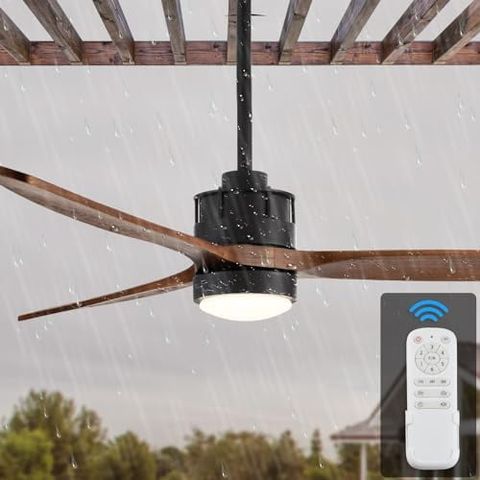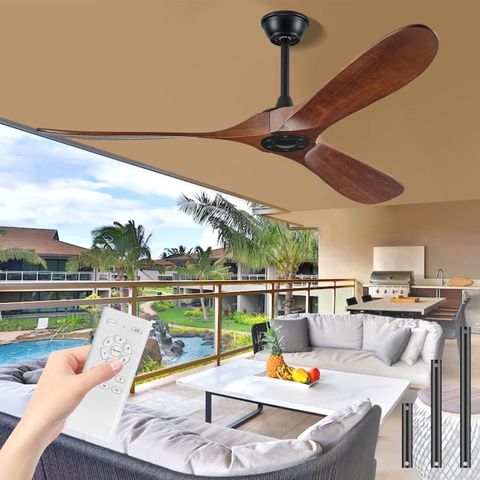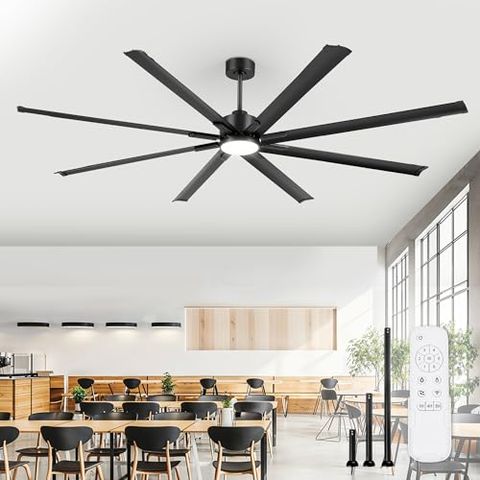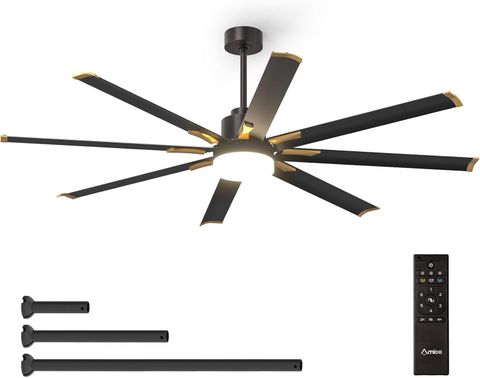When it comes to keeping your outdoor areas comfortable while cutting down on electricity bills, DC motor outdoor ceiling fans offer an excellent solution. These modern fans aren’t just about staying cool – they’re about doing so efficiently and economically. Whether you’re planning a new patio setup or upgrading existing outdoor spaces, understanding how to properly install and use these fans can make a real difference in your monthly energy costs.
Outdoor living spaces have become increasingly popular, but they often come with a hefty price tag when it comes to cooling. Traditional AC systems aren’t always practical or cost-effective for outdoor areas, especially during peak summer months. Enter DC motor outdoor ceiling fans – a smart alternative that combines comfort with energy efficiency. These fans operate on direct current, which means they consume less power than their traditional counterparts while still delivering robust airflow. The key lies not just in choosing the right fan, but in installing it correctly to maximize those energy savings.
Understanding DC Motor Technology
DC motors work differently from standard AC motors. Instead of relying on alternating current, they use direct current which allows for more precise speed control and better energy management. This technology translates directly into lower electricity usage. When you think about it, that’s pretty amazing – a single fan can provide substantial cooling while using far less energy than a large air conditioning unit might require. The efficiency gains become even more noticeable when you consider that DC motors can adjust their speed based on actual needs rather than running at full blast all the time. For instance, a typical DC fan might use 30-50% less power than a conventional fan under similar conditions. That’s real money saved on your electricity bill each month.
Proper Mounting Location Selection
Where you place your outdoor ceiling fan matters more than you might think. The best spots are typically those with good air circulation and minimal obstructions. Consider factors like wind direction, shade from trees or buildings, and proximity to heat sources such as grills or sunny walls. A well-chosen location can increase airflow effectiveness by up to 40%. Think about the layout of your outdoor space. If you have a covered area like a pergola or deck, positioning the fan at the center will ensure even distribution of airflow. For open-air patios, placing the fan near seating areas makes sense, but remember to account for wind patterns. Installing fans too close to walls or corners can actually reduce their effectiveness because there’s nowhere for the air to go. The ideal height is between 8-12 feet above the ground, allowing for optimal air movement without creating safety hazards.
Choosing the Right Size and Style
Not all outdoor fans are created equal, and selecting the right size for your space is crucial. A fan that’s too small won’t adequately cool your area, while one that’s too large can look out of place and potentially waste energy. For smaller spaces like covered porches, a 36-42 inch fan works well. Larger areas such as poolside patios benefit from 52-60 inch models. The style matters too – some fans are designed specifically for wet locations, while others are meant for dry outdoor areas. Check the manufacturer’s specifications carefully. Some fans are rated for use in high-humidity environments, which is important if you live in a coastal area or have frequent rainfall. The blades themselves play a role too – curved blades tend to move more air efficiently than straight-blade designs. Additionally, consider the weight capacity and mounting hardware requirements. A fan that’s too heavy for your ceiling structure could be dangerous and inefficient.
Installation Best Practices
Proper installation is perhaps the most critical factor in achieving maximum energy savings. Start by checking local building codes and electrical requirements. Many areas require permits for outdoor electrical installations, and some may have specific guidelines about fan placement and mounting. Hiring a qualified electrician ensures compliance with safety standards and prevents costly mistakes later. The mounting bracket must be securely attached to a load-bearing structure – never try to hang a heavy fan from drywall alone. Proper wire connections are essential; loose connections can cause overheating and reduce efficiency. Consider the wiring options available – some DC fans work with standard household wiring, while others may need specialized controls or converters. Always double-check that all components are rated for outdoor use and can handle the expected weather conditions.
Smart Control Systems Integration
Modern DC fans often come with smart features that can dramatically improve energy efficiency. Smart controls allow you to program schedules, set temperature thresholds, and even integrate with home automation systems. These features mean the fan only runs when needed, rather than continuously operating. For example, a timer function can automatically turn off the fan after sunset, saving energy when no one is around. Motion sensors can detect occupancy and activate the fan only when people are present. Some advanced systems even connect to weather apps to automatically adjust settings based on temperature and humidity levels. The key is finding the right balance between convenience and efficiency. Too many automated features can complicate things, while too few might miss opportunities for savings. Test different combinations to see what works best for your lifestyle and schedule.
Maintenance and Longevity Tips
Regular maintenance keeps your DC motor fan performing at its peak efficiency. Clean blades every few weeks, especially after dusty or rainy periods. Accumulated dirt and debris can reduce airflow and force the motor to work harder. Check the mounting hardware periodically for tightness and signs of wear. Loose components not only affect performance but can also pose safety risks. Lubricate moving parts according to manufacturer recommendations, though many DC motors are designed to be maintenance-free. Keep an eye on the electrical connections – corrosion can develop over time and reduce efficiency. Most importantly, replace worn-out parts promptly. A damaged blade or faulty motor will not only be inefficient but could also be dangerous. Regular inspections every six months can catch potential problems before they become major issues. Remember that a well-maintained fan lasts longer and continues to save energy throughout its useful life.
Installing DC motor outdoor ceiling fans isn’t just about adding another gadget to your outdoor space – it’s about making smart choices that pay dividends over time. From selecting the right size and location to proper installation and ongoing maintenance, every step contributes to maximizing your energy savings. The initial investment in quality equipment and professional installation pays off quickly through reduced electricity costs. As you plan your outdoor improvements, consider how these efficient fans can transform your space from merely functional to truly sustainable. Whether you’re entertaining guests or simply relaxing outdoors, a well-installed DC motor fan provides consistent comfort while keeping your energy bills in check. The combination of smart technology, proper installation, and regular care creates a win-win situation for both your wallet and your environment. Making these upgrades now means enjoying the benefits for years to come, with peace of mind knowing you’ve made an environmentally responsible choice.














